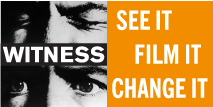Just because footage of abuse exists doesn’t mean it must be shared publicly, if doing so could potentially cause harm to the individuals filmed. You can choose to not show the footage, and instead provide your audience with a description of it. Alternatively, follow the steps below to obscure identities while sharing the videos.
Anonymize Individuals
There are several factors to consider when you want to keep an individual’s identity private.
- Facial and Vocal Recognition – Use a video editor or YouTube’s face blur tool to blur faces. Make sure they are blurred enough to be unrecognizable and in such a way that the visual information cannot be reconstructed. If voices would also reveal an at-risk individual’s identity, use an audio editor to disguise the voice.
- Other Clues – Check that clothing, tattoos, testimony or other audio or visual information in the footage does not reveal identifying information such as names, titles, license plates, or addresses.
- Metadata – If there is metadata attached to the footage that would reveal where it was recorded, or by whom, that could also put individuals at risk. Make sure that when you share the video publically, you do so in a way that does not reveal this identifying information. This may include limiting the use or sharing of related social media posts that could expose someone’s identity or location. For example, re-tweeting or reposting a message containing a video on Twitter or Facebook may unintentionally expose the owner of the account.
In situations where there are multiple subjects (such as a riot), be careful not to unintentionally expose the identity of individuals who are not the focus of your investigation.
NOTABLE EXAMPLES
- In an article about a video that showed one young Syrian child beating another while adults off-camera encouraged the violence, WITNESS shared an edited version of the video that blurs the faces of the children.
- Amnesty International obtained eyewitness footage of human rights violations committed by members of the Nigerian military. In a video report that includes eyewitness clips of beatings and killings, the organization blurred the faces of victims and perpetrators to protect their privacy.
- In its reporting on a video of a sexual assault in Cairo, the New York Times described the video in text rather than sharing the footage.

